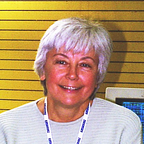Stamps That Tell a Story
Good things come who wait. And who are persistent.
On March 5, 1982, the United States Postal Service (USPS) issued a handsome airmail postal card simply entitled Soaring and designed by Robert E. Cunningham. It was for international usage and was unveiled at the 1982 Soaring Society of America’s (SSA) Convention in Houston. It honoured the sport of soaring and to coincide with the SSA’s 50th anniversary. This project took a long time to happen. Here is some background information:
In 1962, then SSA Region-7 Director Dale S. May started the ball rolling. He proposed a soaring stamp to the USPS to commemorate the 35th anniversary of the SSA which was to be in 1967. He figured five years was plenty of lead time.
No stamp.
Next Bernald S. Smith urged USPS to issue a soaring stamp to mark the first World Gliding Championships to be held in the USA. Bernald was President of the SSA in 1969 and the contest was scheduled for 1970 in Marfa, Texas. He pointed out that almost every other country had observed their hosting of the event with a stamp.
Still no stamp.
In frustration, Dale May created his own ‘design’, using the American Bald Eagle stamp, issued on May 6, 1970 as part of the Natural History series. He added a small piece of white tape with the words “World Soaring Contest” and posted many cards during the Championships at Marfa.
Region-4 Director Floyd Sweet refused to take NO! for an answer and began writing letters annually to all the SSA Directors. In 1978, the then Director of the National Soaring Museum passed Floyd’s letter to members of the Elmira Stamp Club (ESC). 1980 marked the 50th anniversary of the First National Soaring Contest in the USA (held in Elmira, NY) and 1982 would mark the 50th anniversary of the founding of the SSA. The club’s decision was to shoot for 1980 with 1982 as a fall-back position. Frank Hurtt, Ithaca, NY, presented his design showing a Schweizer 1–26 sailplane over Chemung County.
No stamp for 1980.
The time must have finally been right for a soaring stamp. A Soaring Stamp Proposal Committee was formed representing the SSA, the NSM and the ESC. With everyone who was someone involved in this project, success came.
Early in 1981, the USPS decided that a postal card (with a larger area for an image!) would be more appropriate than just a stamp. It would be used primarily for mailing to Europe where the sport originated. By September the Citizens’ Stamp Advisory Committee approved the idea of an airmail postal card to be designed by Cunningham, who was from Fort Worth, Texas.
It was to relay the feeling of the sport and show non-specific sailplanes. Final approval came from the Postmaster General in January 1982 for the airmail postal card to be issued at the SSA convention to honour soaring as “an art, a science and a sport…which has become popular around the world.”
The United States of America was the first country to honour the sport with postal stationary. With the stamped imaged being as large as it is, one can see that the designer obviously created a new type of aircraft. The sailplane in the front seems to show the nose section of a PIK-20 and the tail section of an Open Cirrus; the second sailplane shows what looks like the front half of a K-6E and again with an Open Cirrus tail section. The third sailplane can not be identified. A towering cumulus makes a perfect backdrop.
©2002, 2022 Simine Short
This article first appeared in the March, 2002 issue of Gliding magazine. Simine Short is an aviation researcher and historian. She has written more than 150 articles on the history of motorless flight and is published in several countries around the world as well as the United States. She is also the editor of the Bungee Cord, the quarterly publication of the Vintage Sailplane Association.
Read the next article in this issue, return to the previous article in this issue or go to the table of contents. A PDF version of this article, or the entire issue, is available upon request.
